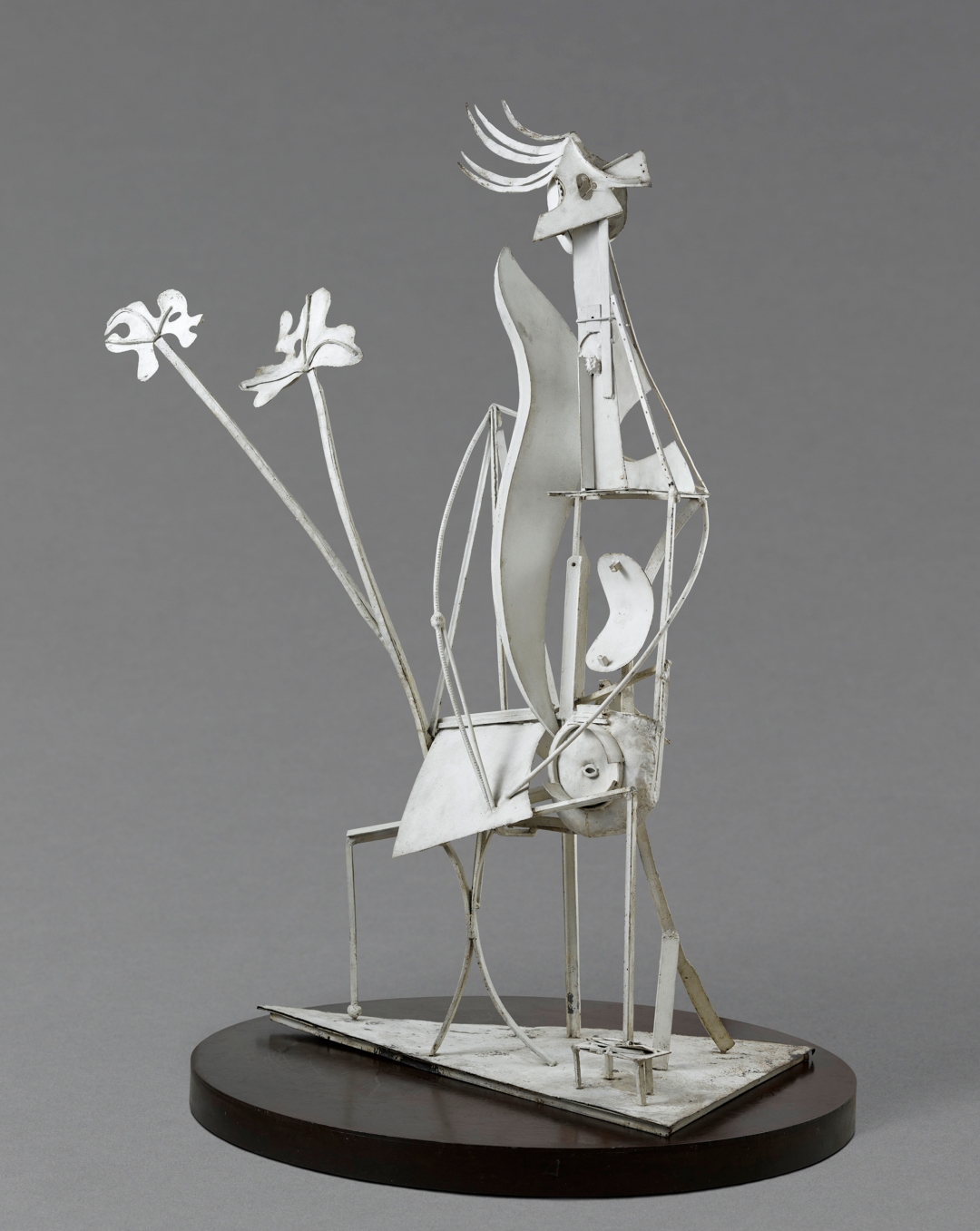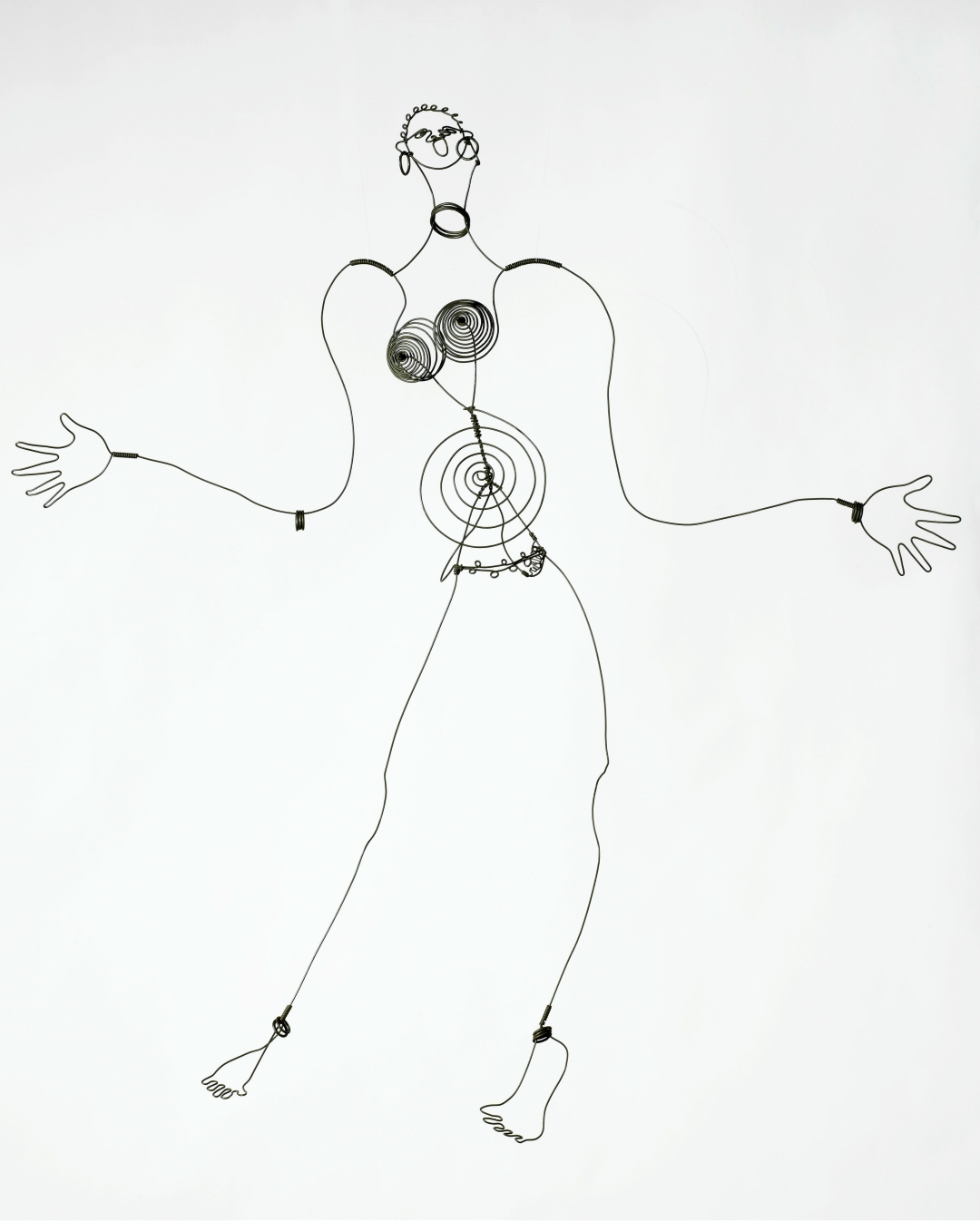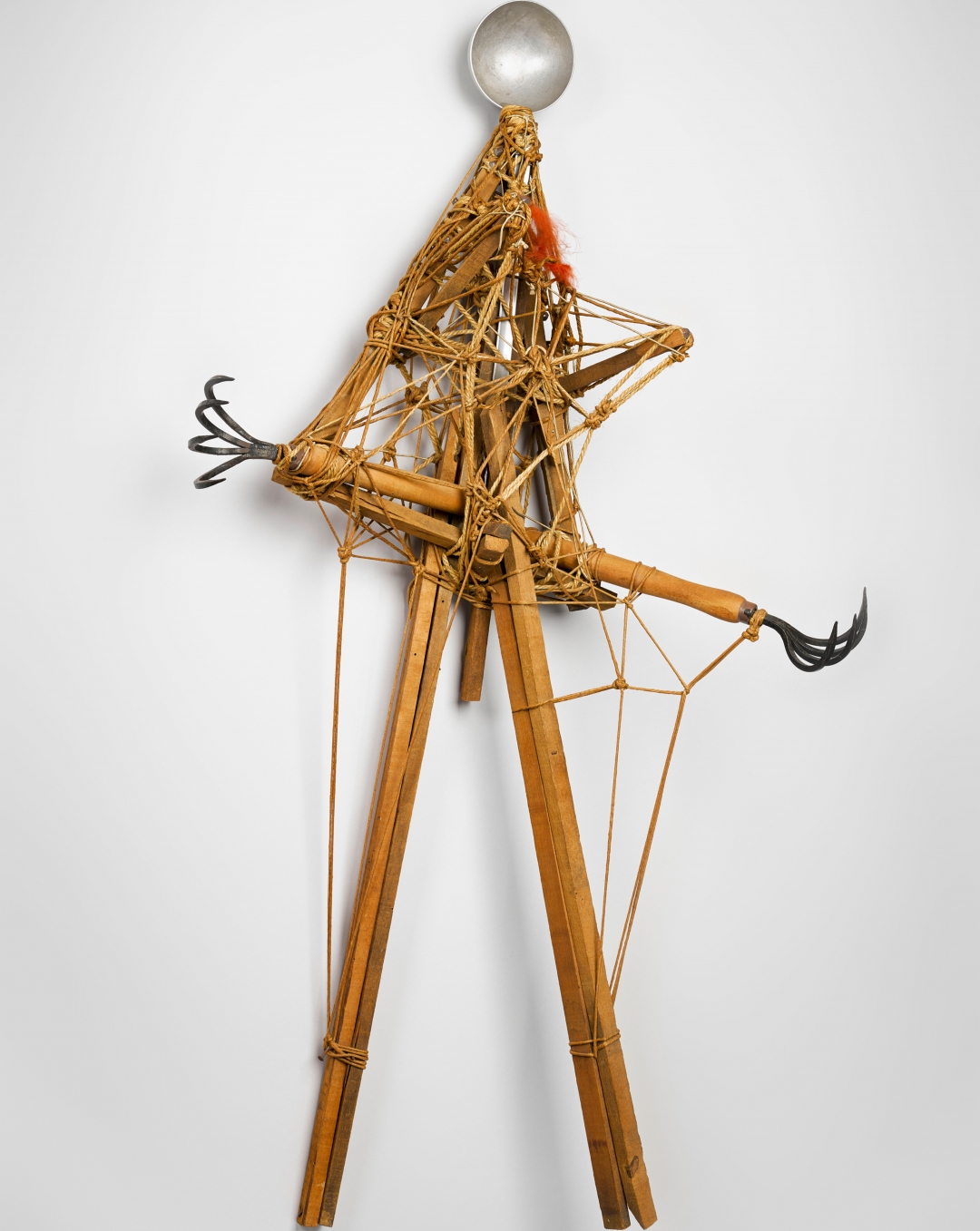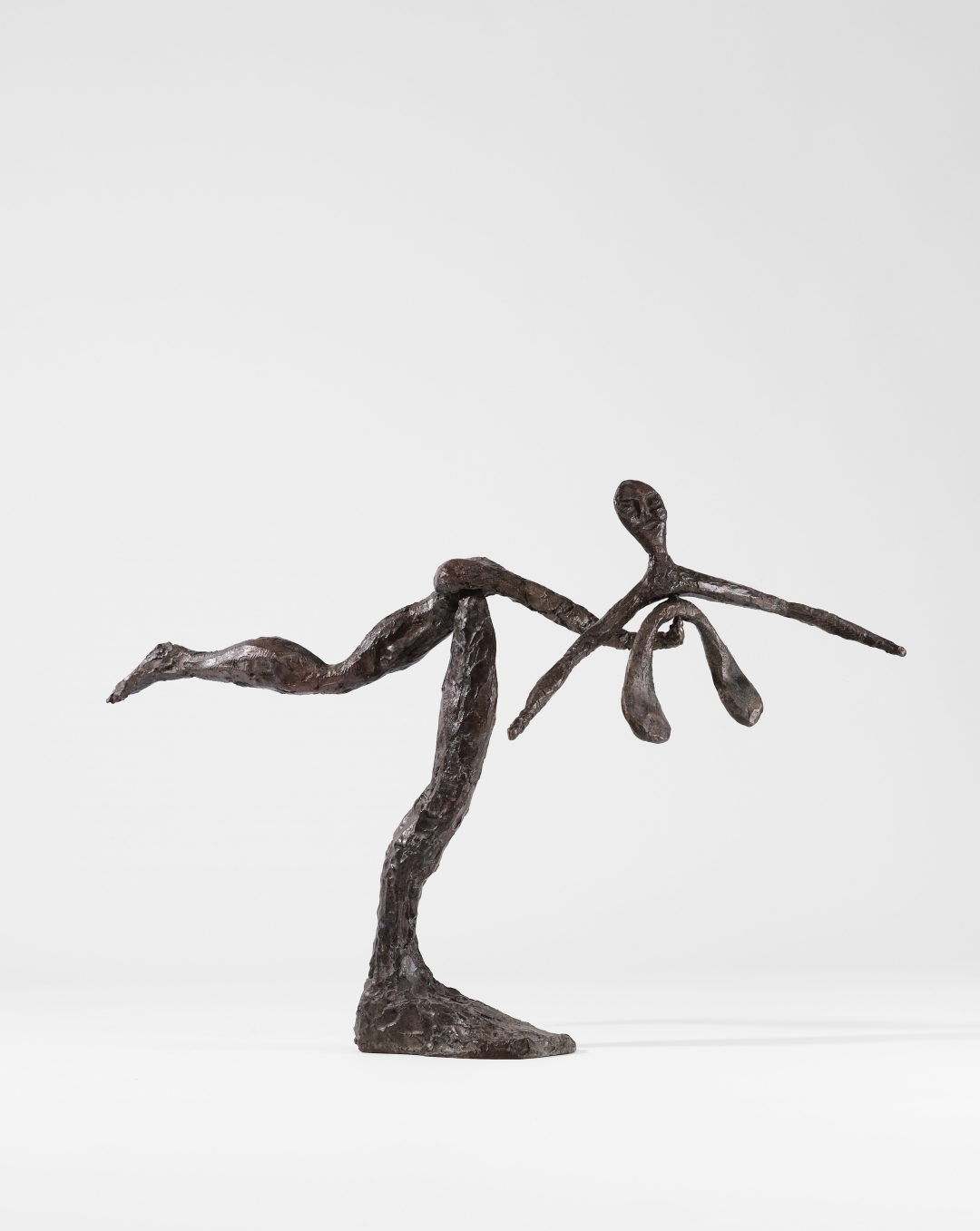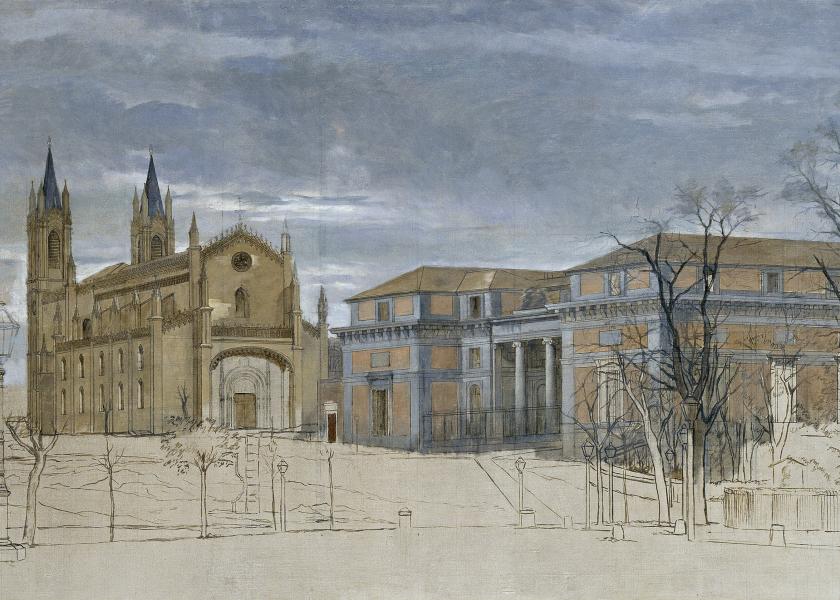Picasso Meets Calder
A Dialogue Between Geniuses in Málaga
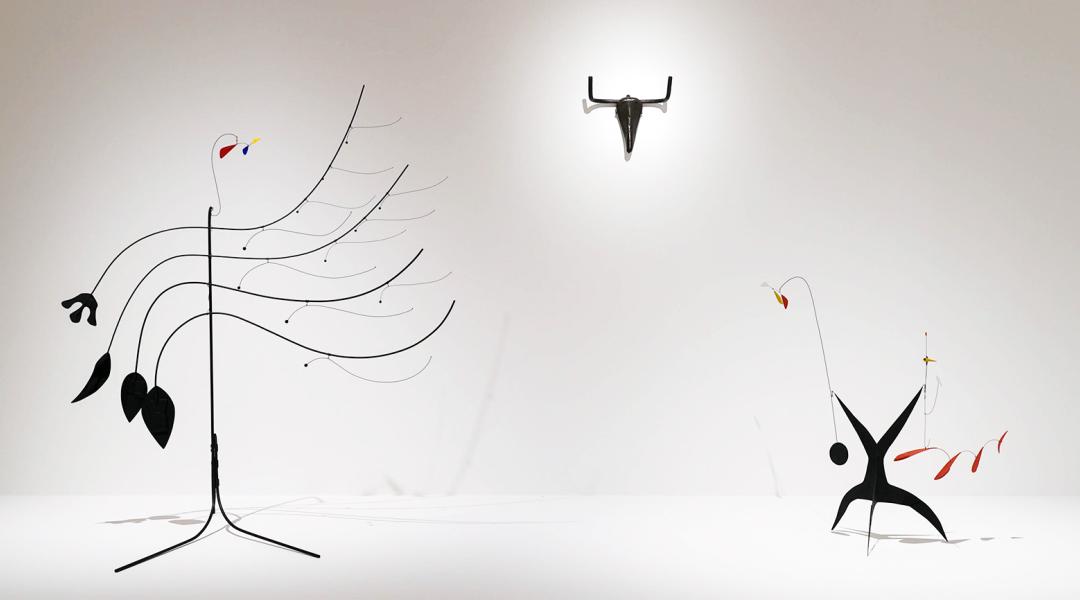
The art of Pablo Ruiz Picasso meets the disruptive talent of Alexander Calder in 'Calder-Picasso': a unique exhibition hosted by the Museo Picasso Málaga until 2 February 2020. We take a look at the fortuitous meeting that lies at the heart of one of the key exhibitions of this season.
They revolutionised art with their unique proposals, creating their own universes that elevated them to the category of great masters. Alexander Calder (1898-1976) and Pablo Picasso (1881-1973) crossed paths only a few times: they met in 1931, when Calder presented his first exhibition of non-objective sculptures at the Galerie Percier in Paris. They met again six years later, in the Spanish Pavilion at the Paris International Exhibition, where Calder’s Mercury Fountain was installed opposite Picasso’s Guernica. From then on, both became celebrities and symbols of their generation. While they did not share the same aesthetic ideas, they were joined by a common interest in exploring the void, or absence of space, an aesthetic concern they defined from the figure through to abstraction.
Now, this artistic connection is unveiled in Calder-Picasso, an exhibition co-produced by the Museo Picasso Málaga in collaboration with the Calder Foundation of New York and the Fundación Almine y Bernard Ruiz-Picasso para el Arte, which will show us unpublished aspects of the two great artists. “Never before has a museum managed to create a dialogue between these two key figures in the history of contemporary art. Picasso conceived a unique way of understanding what it was to make a painting, which swept the board all over the world with cubism. Calder, on the other hand, with his mobiles suspended from the ceiling, revolutionised the idea that sculpture was an object on a stand,” says José Lebrero Stals, director of Museo Picasso Málaga. “Thanks to the enthusiasm of the two artists’ grandchildren, we have brought together more than a hundred works by both men with the collaboration of several exceptional institutions. Although they inhabited seemingly opposite territories—Calder explored multidimensional abstractions, while Picasso constantly investigated the human and animal body—this exhibition invites us to experience the forms,” he says. The similarity of styles is disturbing at times, which turns identifying the art of one and the other into something like a game. “This unexpected encounter between two giants of contemporary art suggests we reconsider from scratch what the deeper essence of the work of art is.”
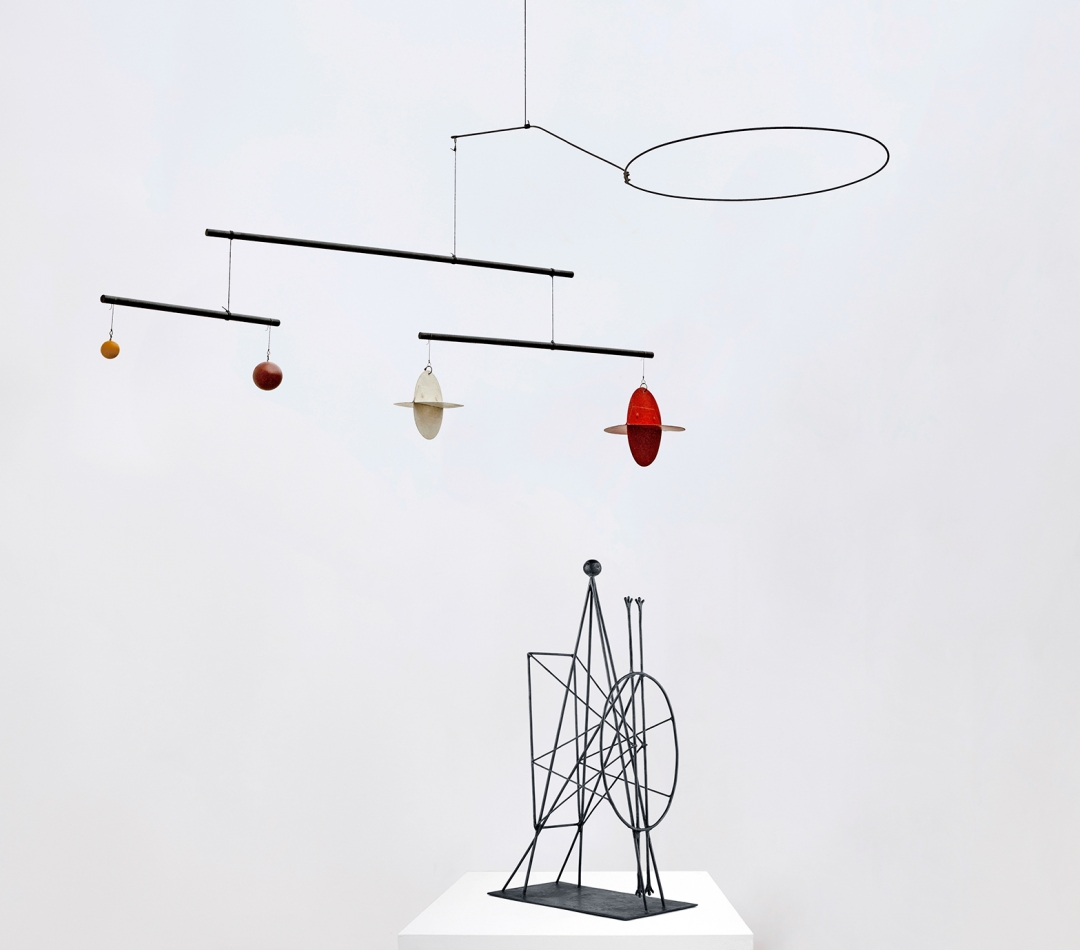
'Mobile' (c. 1937), by Alexander Calder. Finnish National Gallery, Ateneum Art Museum, Helsinki; 'Figure (Project for a Monument to Guillaume Apollinaire)' (Autumn, 1928), by Pablo Picasso. © 2019 Calder Foundation, New York / VEGAP, Madrid © Sucesión Pablo Picasso, VEGAP, Madrid 2018
This encounter of talents has its origin in an exhibition organised a while back by the artists’ grandchildren, Alexander S. C. Rower and Bernard Ruiz-Picasso. “A few years ago, I curated an intimate exhibition with my friend Bernard dedicated to the works of our grandparents, on the occasion of the opening of the new Almine Rech gallery in New York,” says Alexander S.C. Rower, president of the Calder Foundation. “The exhibition was quite small and very personal, but it made it obvious that there was much more to explore around the resonances between Calder and Picasso. The Picasso Museum in Paris suggested we undertake a more ambitious museum exhibition and invited Picasso Málaga to co-produce it.”
Deciding which pieces would make Calder-Picasso was not an easy task, Rower explains: “The biggest challenge when you curate an exhibition is to bring down a very long list of excellent works to a concise selection that, at the same time, teaches and inspires the audience, whether they be curious museum visitors or art historians. The process unfolds unexpectedly, from intuition to research, through many conversations. It is always an exciting undertaking.” The president of the Calder Foundation admits that, during the development of the project, he learned new aspects of the American artist’s work: “Over the years, from when I started at the foundation, in 1987, until now, my respect for my grandfather’s work has grown even more. Working and learning with other scholars, curators and writers, I realised Calder’s profound influence on 20th-century artists and also on today’s creators. The project Bernard Ruiz-Picasso and I have embarked on—and the findings that we will discover little by little—will undoubtedly enhance this appreciation for years to come.
Now, Calder-Picasso visitors will also discover new perspectives on both artists. Meeting the Málaga-born artist in his hometown is always inspiring, as José Lebrero Stals points out. “It is emotionally intense and symbolically rich to receive the tribute that a monographic museum, as is our case, can give the visitor if it links an artist’s creative level with the place where they were born. We try at all times to keep a sense of intimacy and empathy with the space that welcomes people from all over the world. Offering the amazing and long aesthetic adventure of Picasso in his hometown is a revealing experience, thanks to the evocative power art has over those who are open to its energy.”
For Calder lovers, the exhibition holds a few surprises as well, according to the artist’s grandson: “One of my grandfather’s pieces that visitors can discover is Croisière. With its thick and thin wires, it describes the unifying and disparate forces that are so essential in his work: solidity and transparency, immobility and activity, volume and emptiness. Calder included this sculpture in his first exhibition of abstract objects, at the Galerie Percier in Paris, in 193.” Curiously, at the vernissage of that same show, these two exciting artists who, with their disruptive talent, made art much more brilliant, would meet for the first time.
